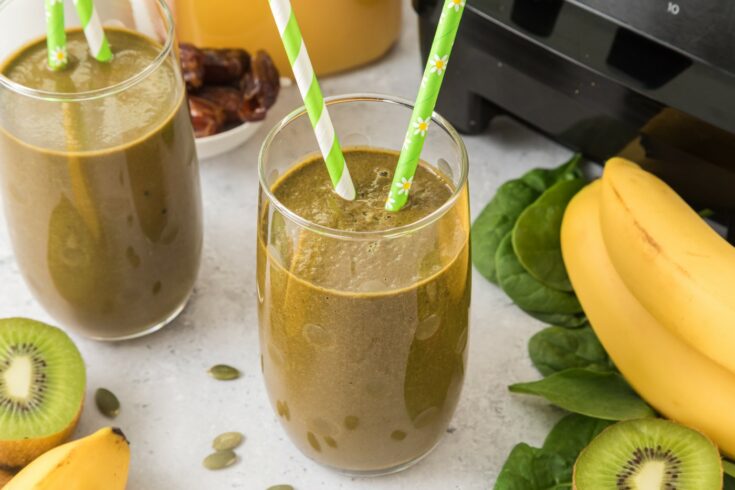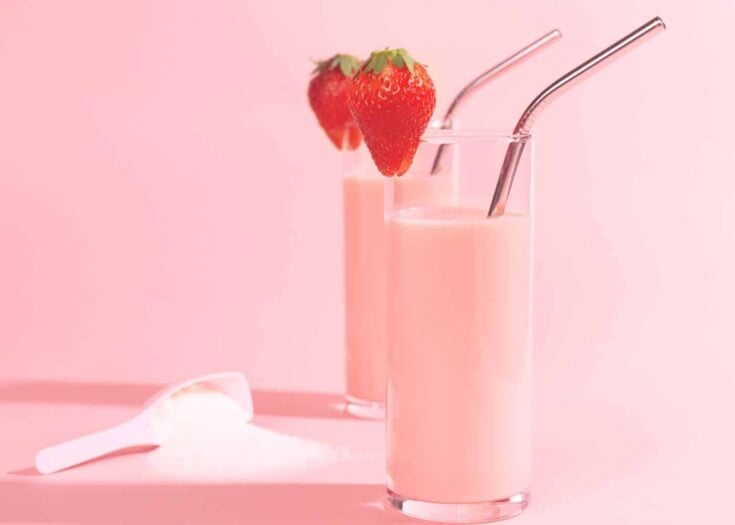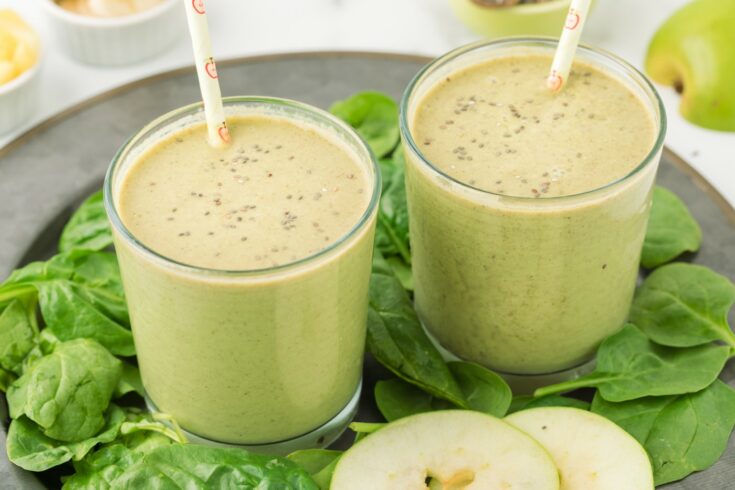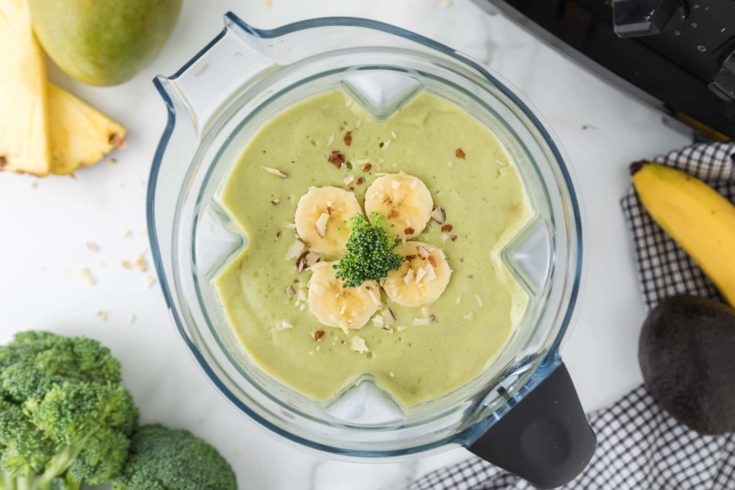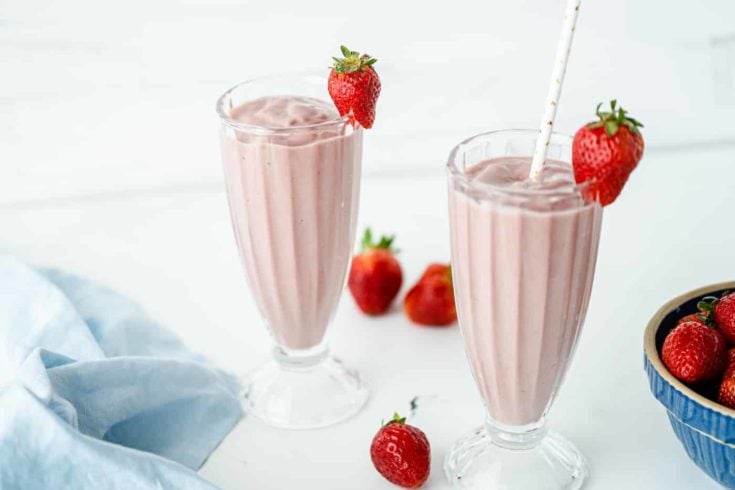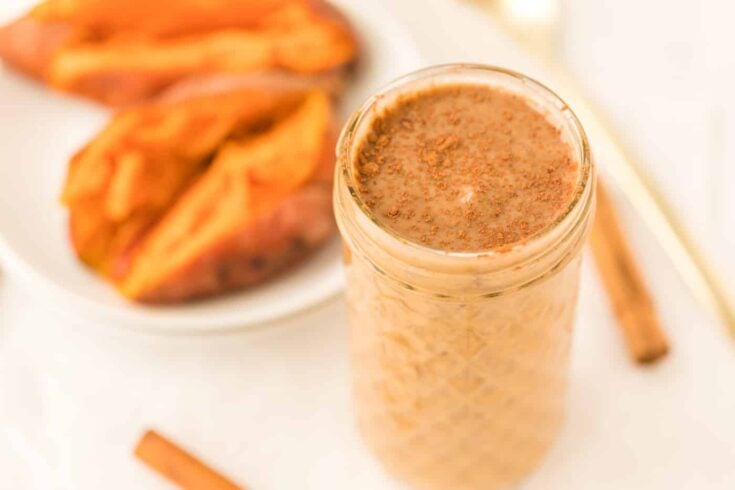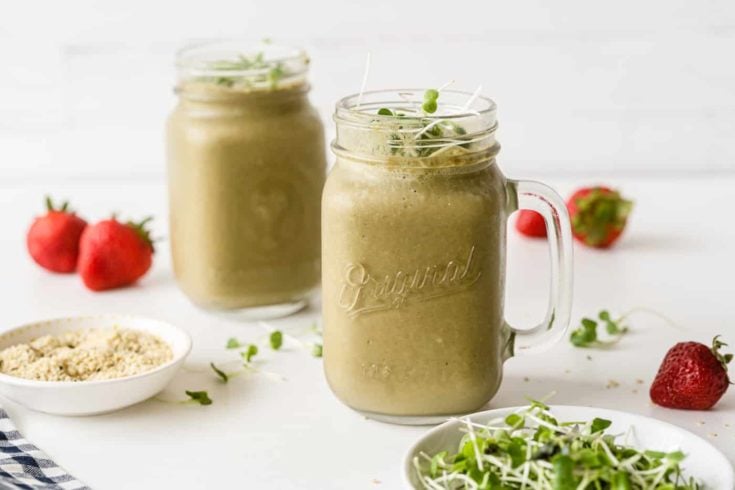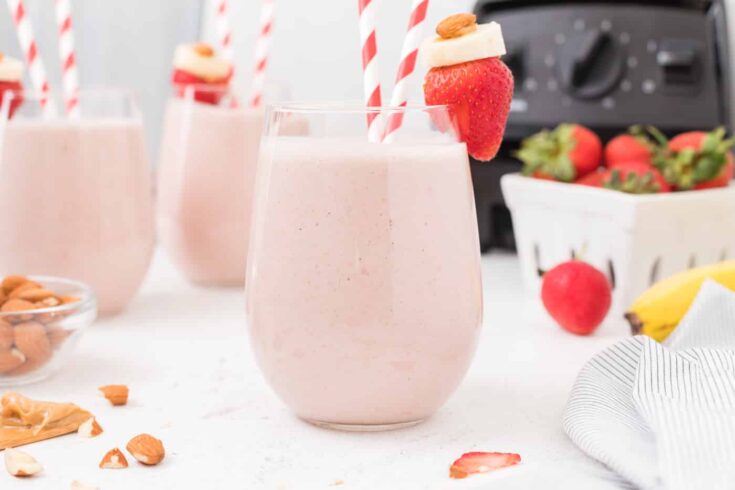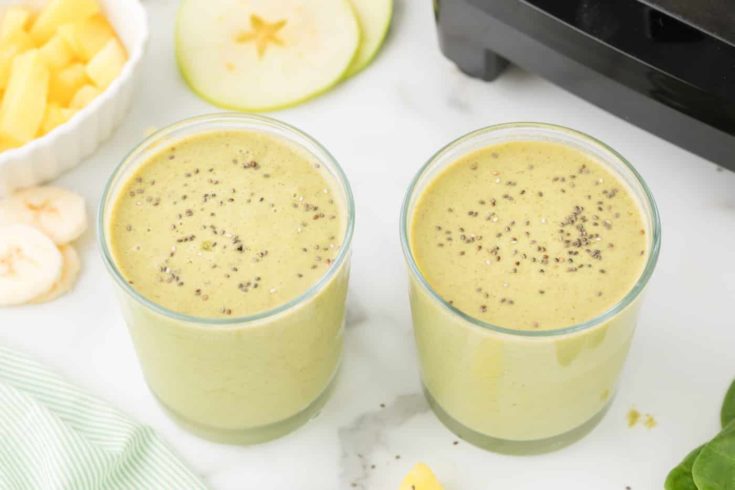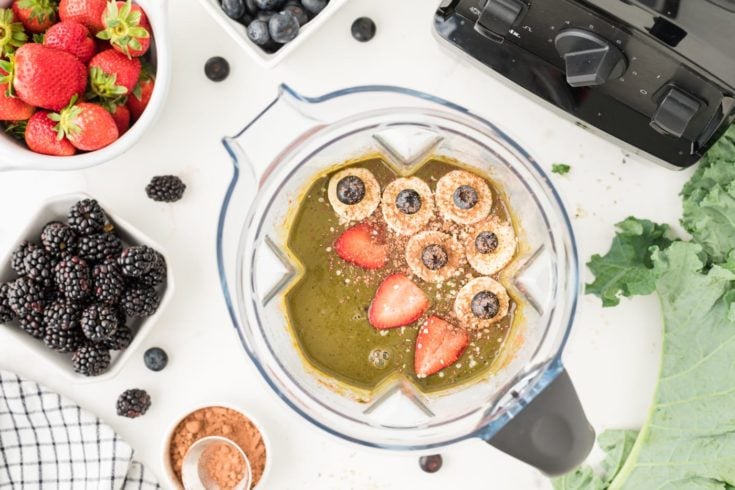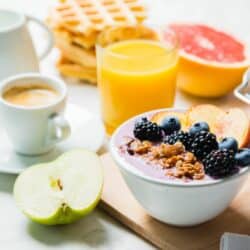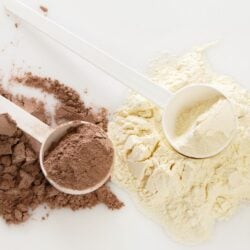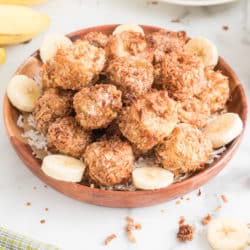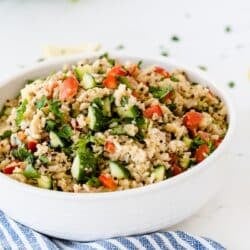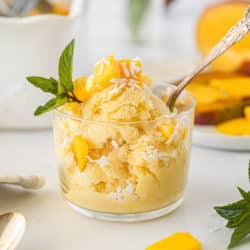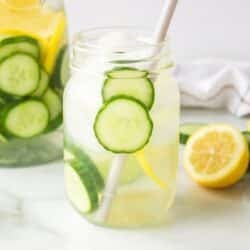10 Nutrient-Dense Breastfeeding Smoothie Recipes
Smoothies are a great food for when you’re breastfeeding. They’re quick and easy, and they can provide a lot of nutrition and calories. Learn the best ingredients and recipes for making delicious and nourishing smoothies for breastfeeding mothers.
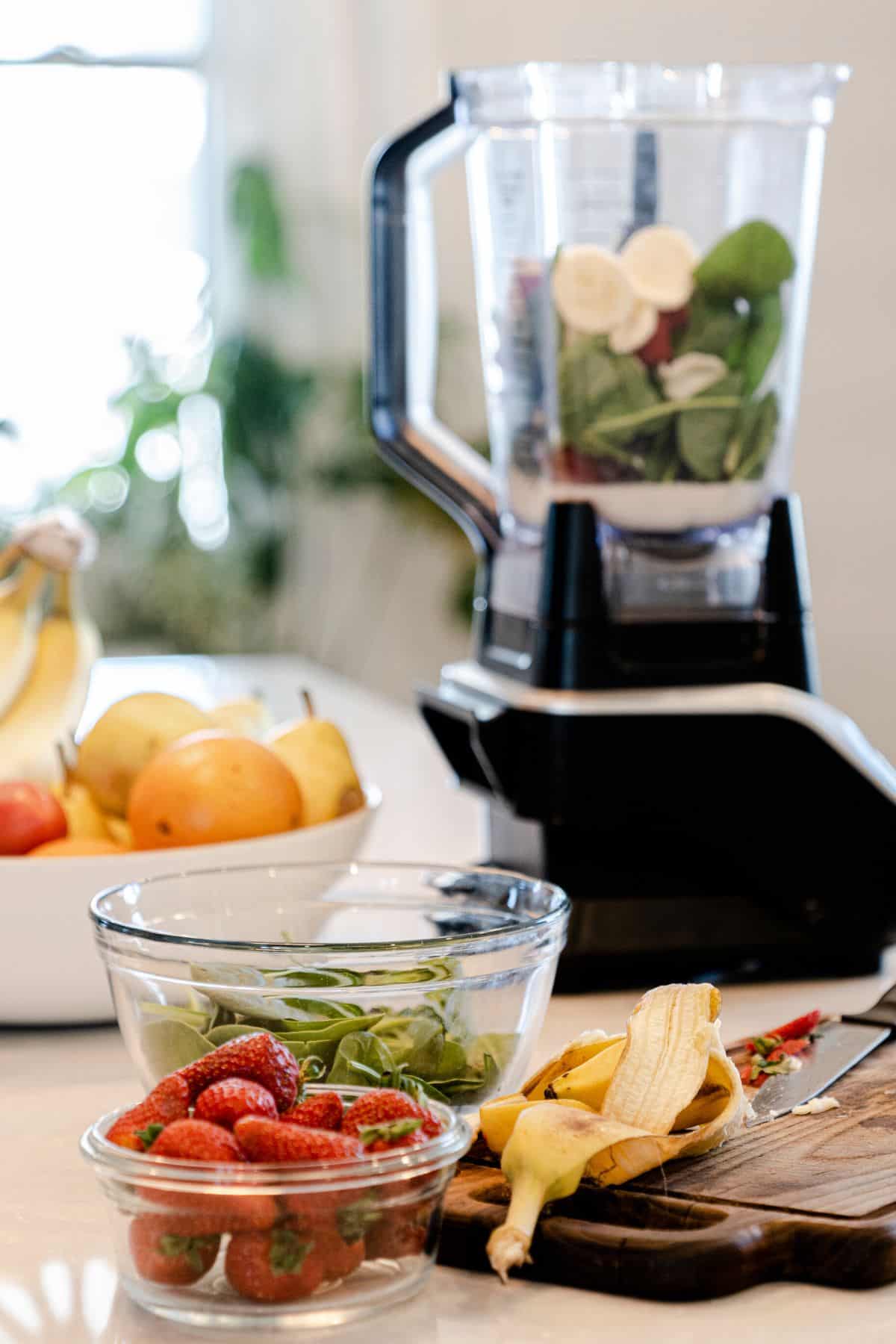
Breastfeeding Smoothie Nutrition
To make your lactation smoothie as healthy as possible, try to achieve a good balance of carbohydrates, protein, and fats. These should be from nutritious sources that also provide you with essential vitamins and minerals.
Carbohydrates will likely make up the largest part of your breastfeeding smoothie. These will help you feel satisfied and less likely to reach for unhealthy snacks. The healthiest carbs are those rich in fiber, rather than refined carbohydrates that have been heavily processed.
Whole grains, vegetables, and fruits are all great choices as these are a good mix of complex carbs (including starches and fiber) and simple carbs (sugar). Try to use a combination of all three sources wherever possible. Because fruits contain the highest amount of sugar, an all-fruit smoothie or ones made with fruit juices may give you more sugar than is healthy.
Protein is not only an essential nutrient in breastmilk production, but it’s also passed to your baby to support his/her growth. Protein is also very satisfying, leaving you feeling pleasantly full.
You can include protein in your breastfeeding smoothies by adding ingredients like Greek yogurt, milk, soy products, protein powder, and nuts.
Finally, make sure you include some healthy fats in your smoothie recipe. These help deliver essential vitamins to cells throughout the body and are an efficient energy source.
There are lots of foods that contain healthy fats and work perfectly in a smoothie, including nuts (and nut butters), seeds, coconut milk, and avocado.
See my full article on the health benefits of green smoothies.
10 Healthy Breastfeeding Smoothie Recipes
Here are some breastfeeding smoothie recipes made using real food ingredients to help nourish you and your child.
Iron Rich Smoothie
Many women could use an iron boost after pregnancy and delivery. This iron-rich smoothie is nutritious and so tasty!
Strawberry Protein Smoothie (25 Grams)
Protein is essential for breastfeeding moms and this protein-rich smoothie packs in at least 25 grams in one serving!
Apple Banana Spinach Smoothie
This green smoothie is nutritious, easy to make, and tastes delicious.
Broccoli Smoothie with Pineapple
This is another green smoothie using frozen vegetables to help mask the flavor.
Strawberry Banana Beet Smoothie
Beets are great for a plant-based iron source, and you can't taste them in this delicious Strawberry Smoothie.
Sweet Potato Smoothie
If you're craving something more fall-like, try this Sweet Potato Smoothie with cinnamon.
Broccoli Sprout Smoothie
Broccoli sprouts are incredibly nutritious and work well in this fruity green smoothie.
Strawberry Banana Oatmeal Smoothie
Oats are a great ingredient for improving breast milk supply, and they work well in this smoothie recipe.
Green Apple Smoothie with Spinach
This is a simple and delicious smoothie made with just a few ingredients.
Recommended Ingredients
There are lots of delicious ingredients you can use to create healthy lactation smoothie recipes, so it’s easy to find a combination you’ll enjoy. And, you don’t always have to make a green smoothie.
If you want to make your own recipe as opposed to choosing one from the above list, here are some tips.
Liquid Base
Here are some ideas for liquids to form the basis of your smoothie.
- Coconut water – This adds a lovely tropical flavor, helps keep your electrolytes balanced, and is a source of antioxidants and amino acids.
- Cow’s milk or yogurt – These are a rich source of fat and protein and also provide vitamin D and calcium.
- Plant-based milks or yogurts – Cow’s milk contains more fats and protein than plant-based milk, but there are still some great dairy-free alternatives you can try. Oat milk is a particularly good source of carbs, although it is low in fats. Soy milk is fairly close to cow’s milk in terms of protein, whereas almond milk is low in both fats and protein but adds a nice nutty flavor to your smoothie. You can also use coconut milk which is much higher in fat, but can pack a nutritional punch with the extra calories.
Fruits
You can really use whatever fruits you like best in your breastfeeding smoothie. For maximum health benefits, choose fruits that are in season as they will be more nutritious, and will usually taste better too.
Fruits are a great source of fiber, vitamin C, and phytonutrients. You can use frozen fruits which are generally more budget-friendly and appropriate for a smoothie because they help add thickness.
Ideal fruits to try include:
- Naturally sweet fruits like bananas, sweet cherries, and dates (removing the need to add extra sweeteners)
- Fruits low in sugar, such as berries and kiwifruit
- High fiber fruits to prevent constipation, such as apples, bananas, pears, blackberries, raspberries, and strawberries
- Creamy fruits like frozen banana and avocado (see my guide on how to freeze bananas for smoothies)
Vegetables
Whilst most fruits are ideal for smoothies, this isn’t always the case with vegetables. Some don’t taste great raw and some are simply too tough to blend smoothly.
Vegetables that work well in a breastfeeding smoothie include:
- Beets
- Carrots
- Celery
- Cucumber
- Leafy greens like spinach, kale, collard greens, Swiss chard, and watercress
- Microgreens (which provide lots of nutrients in a small quantity)
- Zucchini
- Green cabbage
See my complete list of the best greens for smoothies.
Yogurt
There are so many benefits to including yogurt in your smoothies. Greek yogurt is a particularly good protein source and some brands are enriched with live bacteria called probiotics, which can help support your digestion. Yogurt also adds a nice creamy texture.
If you prefer to avoid dairy, try using soy yogurt or coconut yogurt instead.
See my full list of the best foods with natural probiotics for more ideas.
Nuts and seeds
These add protein, fiber, healthy fats (including omega 3 and omega 6), and a whole lot of flavor to your breastfeeding smoothies! If you are worried that your blender may not be able to cope with nuts, try soaking them first in water or milk.
Nuts and seeds to try in your breastfeeding smoothies include:
- Almonds
- Brazil nuts
- Cashews
- Hazelnuts
- Walnuts
- Chia seeds
- Hemp seeds
- Ground flaxseeds
- Pumpkin seeds
- Sesame Seeds
For convenience, you can use nut or seed butters instead, including almond butter.
Ingredients for Milk Supply Support
One of the most common reasons for trying breastfeeding smoothies is to boost milk supply.
While a healthy, balanced smoothie using any of the ingredients mentioned above should help maintain your supply, there are certain ingredients considered better than others for helping with milk production.
These are known as “galactagogues”. These foods are also called lactogenic foods.
There is little scientific evidence to prove that galactagogues really do increase the supply of breastmilk. But given the fact that many moms swear by their effectiveness- and that these are all healthy ingredients anyway – they are certainly worth a try!
Brewer’s yeast
Brewer’s yeast – also known as nutritional yeast – is a healthy ingredient packed with a whole host of vitamins and minerals. Moms for decades have sworn that brewer’s yeast helps with milk supply!
You can add powdered brewer’s yeast to your breastfeeding smoothies, but bear in mind that it has quite a bitter flavor.
Start with just a little at first, making your way up to around 3 tablespoons per day, and try combining it with sweet ingredients to balance out the flavors.
Nuts
Some women find that raw nuts can help boost milk production, with almonds, walnuts, macadamia nuts, and cashews the most popular.
If you choose to add a nut butter to your smoothie for convenience, check that it contains simply nuts and no added salt, sugar, or unhealthy additives.
Seeds
Some people consider certain seeds to be galactagogues, particularly fennel and sesame seeds.
Fennel is very aromatic and the licorice-like flavor can take some getting used to in a smoothie, although the seeds pair quite well with citrus flavors.
When choosing sesame seeds, try to find the unhulled variety as they are richer in calcium. They are darker in color and a little harder to find (although many health food stores carry them).
As a convenient alternative to sesame seeds, you can use tahini (a paste made from them), but this is prepared with hulled rather than unhulled seeds.
You can also try other types of seeds including: flax seeds, sunflower seeds, pumpkin seeds, and others.
Legumes
Legumes – including chickpeas and lentils – are a popular choice to help increase milk supply. While they may not seem typical smoothie ingredients, they add a wonderfully creamy texture along with plenty of nutrients. They also make your smoothie super-satisfying!
Legumes are generally fairly mild in flavor, which means they are easy to disguise with other ingredients like cocoa or fruits. The healthiest option is to buy dried beans and cook them yourself before adding them to your smoothies. Canned beans are more convenient, but look for low sodium varieties and rinse them well before use.
Peanuts are considered a legume and not a nut, so you can try adding peanut butter to your smoothies too.
Leafy greens
Dark leafy greens are not just rich in vitamins and minerals, but some – particularly raw spinach and cooked kale – are excellent sources of lutein. While lutein isn’t proven to boost breast milk production, studies show that consuming it when breastfeeding increases the amount of lutein passed to your baby through your milk.
Considering the fact that lutein plays an important role in the development of your baby’s brain, this makes leafy vegetables a valuable addition to your breastfeeding smoothies.
Brightly colored fruits and veggies
Many women swear by red and orange fruits and vegetables, such as carrots, beets, sweet potatoes, mangoes, and papaya for helping boost their milk supply. Naturally colorful fruits and vegetables are great sources of beta-carotene, which the body converts into vitamin A.
See my list of the best orange vegetables.
Consuming plenty of beta-carotene has other benefits, too, with studies showing that it increases the amount of this nutrient in your breast milk.
Look for fresh produce at the grocery store, or buy it from the frozen section to save money (see more of my tips to eat clean on a budget).
Grains
Grains contain certain nutrients that support milk production.
One of these is beta-glucan, which encourages the secretion of prolactin (the hormone responsible for producing milk). Both oats and barley are excellent sources of beta-glucan.
Furthermore, grains – and oats in particular – are also seen as a comfort food. Eating comfort foods is believed to trigger the release of oxytocin, a hormone that supports the production and delivery of breastmilk.
Breastfeeding Nutrition 101
Meeting your nutritional needs is never so important as when you’re breastfeeding!
Being a new mom comes with lots of extra demands, and a healthy diet can help you maintain the energy levels you need. It will also go a long way towards ensuring a healthy milk supply for as long as it’s required.
Plus, of course, you are supplying nutrients to your growing baby. This means that your diet needs to be nutritious enough to support both you and your little one.
During the time you are breastfeeding, you will need more calories than usual. The CDC recommends an extra 330 to 400 kilocalories (kcal) per day compared to the amount you consumed before pregnancy.
This can vary, though, based on factors like your age, activity levels, and body mass index. A healthcare professional is the best person to advise you of your exact calorie needs.
Your diet should be varied and balanced, containing:
- Fresh fruits and vegetables
- Starchy foods rich in fiber
- Seeds and nuts
- Healthy fats
- Protein sources
Your needs for iodine and choline will also be higher when you are breastfeeding. You can keep your levels topped up by consuming dairy products, eggs, seafood, iodized table salt, and legumes. Your healthcare provider might suggest a supplement if your levels are low.
Of course, the odd treat is great when you are breastfeeding, especially when you are struggling to come to terms with all the changes that motherhood brings. But, to support breastfeeding, try your best to avoid processed, sugary foods.
A diet focused on nutritious, whole ingredients will make you feel so much better and will support your recovery plus breast milk supply.
Lactation Smoothie Ingredients to Avoid?
Unless you have a specific food allergy or intolerance – or your baby seems to react when you consume certain foods – there are not really any foods that you need to exclude from your diet when breastfeeding.
That being said, avoid adding caffeine-containing ingredients such as chocolate or coffee to your smoothies as many moms find that consuming them can affect their babies’ sleep.
There are also certain herbs that may suppress milk production and have a negative impact on your supply. These include peppermint, sage, and parsley.
FAQs
There is no real limit on how many breastfeeding smoothies you can enjoy in a day.
Of course, consuming whole foods is important too, and smoothies should only be used to occasionally replace meals or to enjoy as snacks.
But enjoying 1-2 smoothies a day can be a great way to consume a range of nutrients at a busy stage of your life when preparing full meals can be challenging! Just remember to aim for that mix of protein, fats, and carbohydrates, so that your breastfeeding smoothies are well balanced. You can also add healthy smoothie toppings to add more nutrition.
There is no set amount of calories that you should be consuming per day when you’re a breastfeeding mom. This is because everyone’s needs are different, influenced by things like your age, how much activity you do, whether or not you are exclusively breastfeeding, and your body mass index.
But in general, experts recommend that you aim to consume an additional 330 to 400 kilocalories (kcal) per day than what you would normally eat.
Don’t Miss These Healthy Resources for Moms!
Conclusions
Breastfeeding is wonderfully valuable for a baby’s health, but keeping up with your own nutrition can be a challenge. Lactation smoothies can help, providing a range of vitamins and minerals, leaving you feeling satisfied, and helping keep you maintain a consistent supply of valuable breast milk for your baby.
These easy lactation smoothies can also help breastfeeding mothers with postpartum recovery and provide enough milk and nutrients for children. It’s a delicious way to get your calories without too much effort.
Don’t forget to join my newsletter list to get exclusive clean eating recipes and tips. The newsletter is 100% free with no spam; unsubscribe anytime.
About the Author: Carrie Forrest has a master’s degree in public health with a specialty in nutrition and is a certified holistic nutritionist. She is a top wellness and food blogger with over 5 million annual visitors to her site. Carrie has an incredible story of recovery from chronic illness and is passionate about helping other women transform their health. Send her a message through her contact form.
Note: this post is for informational purposes only and is not intended as medical advice. Please consult your healthcare provider for recommendations related to your individual situation.



